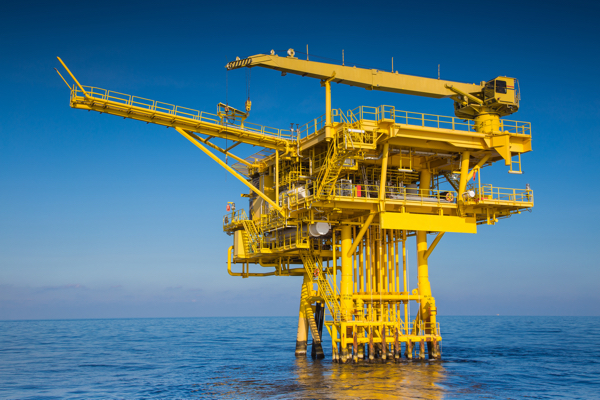Basic Materials
Stock to Watch: Marathon Oil Corporation (NYSE: MRO)

On Tuesday, Shares of Marathon Oil Corporation (NYSE: MRO) declined -0.14% to $20.68. The stock recorded $20.31 as its minimum price and hit the max level of $20.83, during its most recent trading session. It traded total volume of 9,382,212 shares lower than the average volume of 13.08M shares.
Marathon Oil Corporation (MRO) recently stated first quarter 2018 net income of $356.0M, or $0.42 per diluted share, which includes the impact of certain items not typically represented in analysts’ earnings estimates and that would otherwise affect comparability of results. Adjusted net income was $154.0M, or $0.18 per diluted share. Net operating cash flow was $649.0M, or $707.0M before changes in working capital.
Highlights:
- Total production averaged 398.0K net boed, excluding Libya; U.S. production averaged 284.0K net boed and U.S. oil production averaged 164.0K bopd, both up 9% sequentially on a divestiture-adjusted basis
- Eagle Ford maintained flat production of 104.0K net boed; 11 wells in Atascosa County had average 30-day IP rates of 1,615 boed (76% oil)
- Bakken production increased to 74.0K net boed, up 7% sequentially; Arkin well in Hector set new basin Three Forks record with 3,040 bopd 30-day IP; June and Chauncey wells in West Myrmidon set new basin Middle Bakken records with 3,470 bopd average 30-day IP rates
- Oklahoma production up 17% sequentially to 75.0K net boed; oil production up 25% sequentially; STACK leasehold drilling mostly accomplished in first quarter
- Northern Delaware production increased to 16.0K net boed; seven wells across Eddy and Lea Counties had average 30-day IP rates of 1,460 boed (69% oil)
- Captured more than 250.0K net acres in multiple new plays in the last year, counting a mostly contiguous position in the emerging Louisiana Austin Chalk play at a cost of less than $900 per acre
- Received $1.20B in proceeds from the Libya sale and the final Canadian oil sands payment
- Raised 2018 annual resource play oil and boe production guidance to 25 – 30%, up from 20 – 25% formerly, while maintaining the $2.30B 2018 development capital budget
Capital:
First quarter development capital expenditures, before working capital, were $618.0M, and are not ratable for the balance of 2018 because of higher working interest and non-operated pace relative to the remainder of the year. Net cash offered by continuing operations was $649.0M during first quarter 2018, or $707.0M before changes in working capital. The Company’s 2018 development capital budget is still anticipated to be $2.30B.
Outside of the development capital budget, resource play leasing and exploration (REx) capital expenditures were $94.0M in the first quarter, more than fully funded through divestiture proceeds. Though episodic in nature, the Company anticipates second quarter REx capital expenditures to be about $150.0M.
Production Guidance:
Marathon Oil anticipates second quarter 2018 U.S. production to average 280.0K to 290.0K net barrels of oil equivalent per day (boed). Within this guidance, the Company anticipates second quarter 2018 U.S. resource play production to average 270.0K to 280.0K net boed. Second quarter 2018 International production is expected to average 115.0K to 125.0K net boed.
For full-year 2018, the Company now anticipates annual resource play oil and barrel of oil equivalent (boe) growth of 25 – 30 percent, up from 20 – 25 percent formerly, and is trending toward the high end of its 2018 guidance ranges for total Company oil and boe.
U.S. E&P:
U.S. E&P production averaged 284.0K net boed for first quarter 2018, up 9 percent contrast to the prior quarter and up 39 percent from the year-ago quarter on a divestiture-adjusted basis. First quarter production from the U.S. resource plays was 269.0K net boed, up from 249.0K net boed in the prior quarter. First quarter U.S. E&P unit production costs were $5.89 per boe and are expected to moderate through 2018 as the Company implements its plans to access additional infrastructure.
EAGLE FORD: Marathon Oil’s Eagle Ford production averaged 104.0K net boed in the first quarter, contrast to 105.0K net boed in the prior quarter. The Company brought 34 gross Company-operated wells to sales with average 30-day initial production (IP) rates of 1,750 boed (64% oil). Improved completion designs continued to deliver solid results outside of core Karnes County, where the four-well Carpenter Kellner pad and the four-well Guajillo West pad achieved average 30-day IP rates of 1,690 boed (78% oil) and 1,635 boed (73% oil), respectively. The Eagle Ford asset generated noteworthy free cash flow in the quarter through a combination of well performance and oil realizations that averaged $1.50 above WTI because of strong LLS-based pricing.
BAKKEN: In first quarter 2018, Marathon Oil’s Bakken production averaged 74.0K net boed, up 7 percent contrast to 69.0K net boed in the prior quarter. The Company brought 11 gross Company-operated wells to sales, six of which were in core Hector with average 30-day IP rates of 2,600 boed (81% oil). The Arkin well in Hector set a new Williston Basin Three Forks record delivering a 30-day IP oil rate of 3,040 barrels of oil per day (bopd). The Company set two new basin Middle Bakken records in West Myrmidon with average 30-day IP rates of 3,470 bopd from the June and Chauncey wells. Two additional West Myrmidon wells that came online late in the quarter, the Mark Middle Bakken well and Wilbur Three Forks well, achieved 24-hour IP rates of 10,875 boed and 7,570 boed, respectively, and are not yet at 30 days of production. The Company continues to optimize completion designs to improve well productivity, increase capital efficiency and reduce costs while generating substantial free cash flow.
OKLAHOMA: Marathon Oil’s Oklahoma production averaged 75.0K net boed during first quarter 2018, up 17 percent from 64.0K net boed in the prior quarter. Oil production was up 25 percent sequentially, mainly as a result of strong carry-in performance from the nine-well Tan infill that came online late in the fourth quarter. The Company brought 17 gross operated wells to sales mainly focused on Meramec leasehold activity in the STACK. This mostly completes the STACK leasehold program for the year, and allows for the transition to pad drilling for the remainder of 2018. In the normally pressured STACK, improved drilling efficiencies and optimized completion designs resulted in accomplished well costs for first quarter standard-lateral Meramec wells averaging $4.0M.
NORTHERN DELAWARE: Marathon Oil’s Northern Delaware production averaged 16.0K net boed in first quarter 2018, up from 11.0K net boed in the prior quarter. The Company brought nine gross Company-operated wells to sales across the Malaga, Red Hills and Ranger areas in Eddy and Lea Counties, seven of which had average 30-day IP rates of 1,460 boed (69% oil). Two wells from the Cypress infill pilot came to sales ahead of plan in the last week of the quarter. A two-well 3rd Bone Spring / Upper Wolfcamp pad in Red Hills achieved average 30-day IP rates of 1,830 boed (68% oil), and an Upper Wolfcamp well in Malaga had an average 30-day IP rate of 2,095 boed (69% oil). In the last six months, Marathon Oil has added 165 risked gross Company-operated locations with an average working interest of 65 percent through trades and a small bolt-on acquisition. The Company is presently benefiting from its Midland-Cushing basis swaps. Open positions include 10.0K bopd hedged at a discount of less than $1 to WTI for the second half of 2018 and all of 2019.
International E&P:
International E&P production, excluding Libya, averaged 114.0K net boed for first quarter 2018, contrast to 121.0K net boed in the prior quarter. The decrease reflects planned turnaround activity in EG that was accomplished in the quarter. First quarter 2018 International E&P unit production costs (excluding Libya) averaged $5.37 per boe, up sequentially because of the timing of liftings in the U.K. and international production mix.
Corporate:
Total liquidity as of March 31 was about $5.0B, which consisted of $1.60B in cash and cash equivalents and an undrawn revolving credit facility of $3.40B. On March 1, the Company closed on the sale of its Libya partner for $450.0M and proceeds were received on the same day. In Addition To, the final Canadian oil sands payment of $750.0M was received.
For the remainder of 2018, the Company’s open hedge positions include an average of 98.0K bopd at a weighted average floor price of $52.18 and a weighted average ceiling price of $57.11, hedged through a combination of three-way collars and fixed price swaps, as of April 27.
The adjustments to net income from continuing operations for first quarter 2018 totaled $202.0M before tax, mainly because of a $257.0M gain from sale of the Libya partner, partially offset by an unrealized loss of $43.0M on commodity derivatives.
MRO has the market capitalization of $18.29B and its EPS growth ratio for the past five years was -23.30%. The return on assets ratio of the Company was -1.80% while its return on investment ratio stands at -3.50%. Price to sales ratio was 3.58 while 81.20% of the stock was owned by institutional investors.



















